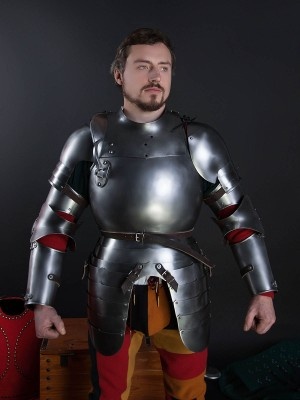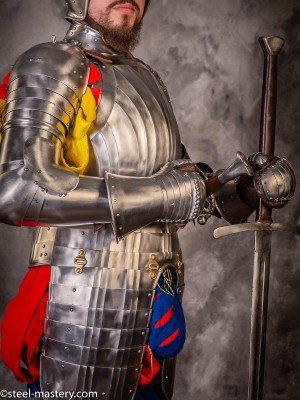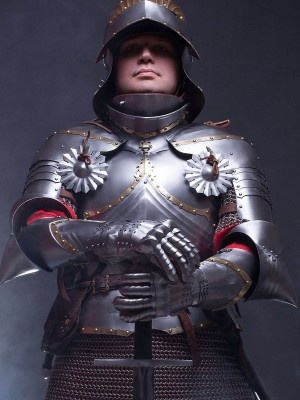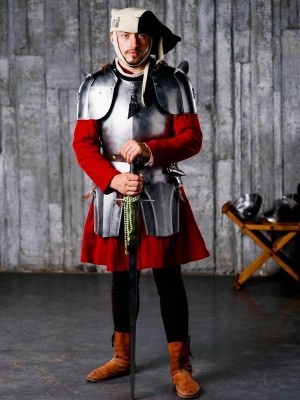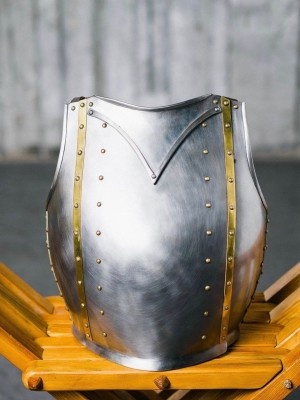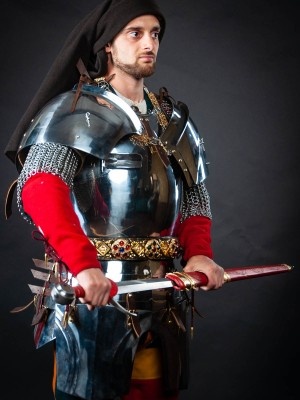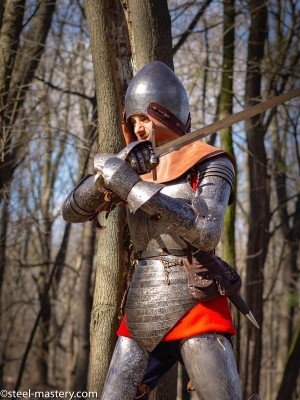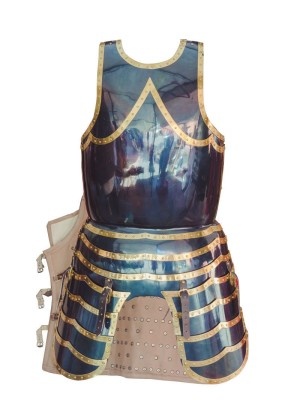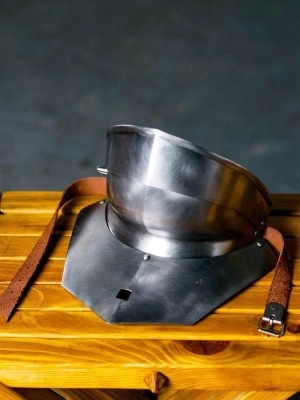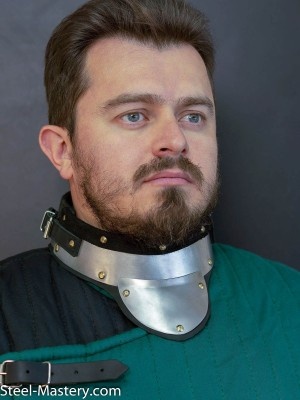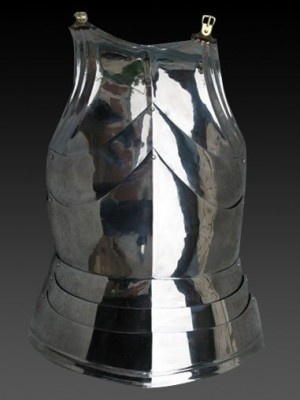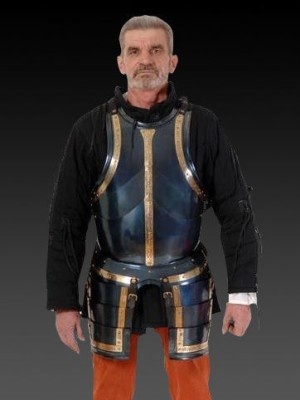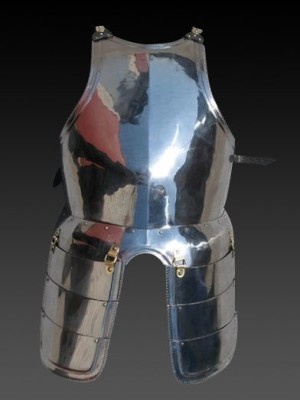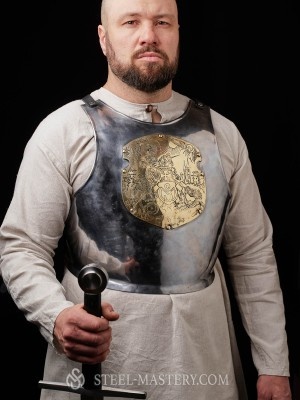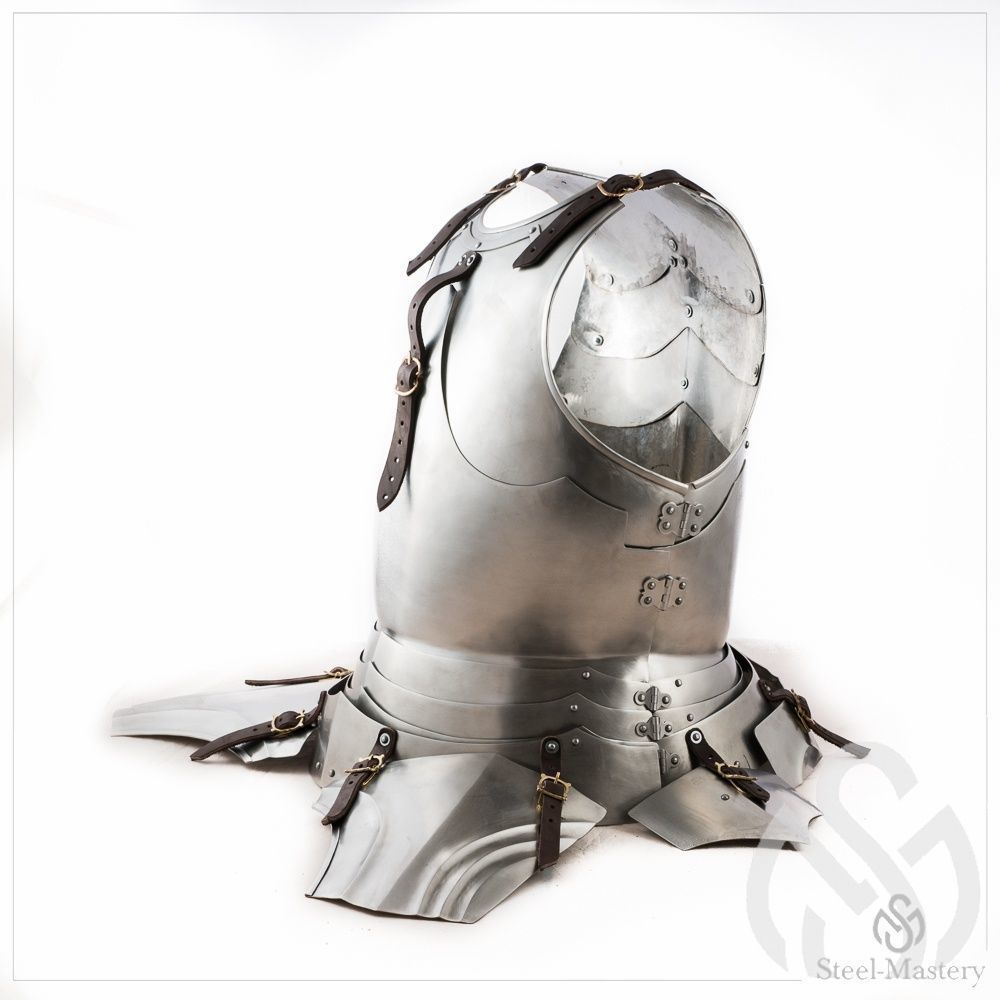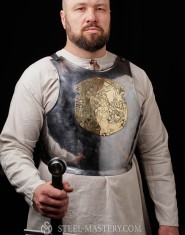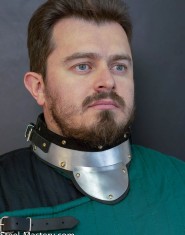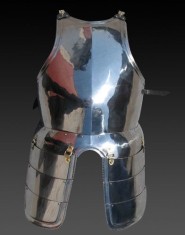A propos Cuirasses, plastrons et gorgerins
Medieval cuirasses, breastplates and gorgets are represented in this section. Here you can see different types of plate protection, which was used in Europe in the Middle Ages.
All models are handcrafted and made-to-measure. Body defence is being made according to the original armour, which is kept in the museums or shown in the old manuscripts.
To become an owner of one of these breastplate or cuirass, you need to do few easy steps:
- Head over the item you like;
- Choose type and thickness of metal;
- Select rivets and buckles;
- Define the wished decoration;
- Choose the type of finish treatment.
If any difficulties arose, please contact our manager. We’ll help you to define your size, required model and its complement.
Once all options are chosen, you add item to the cart and make a payment. After that, manager will contact you with measurement request and specification of order’s details.
All samples of body armour, lombards and bevors are perfect for participation in the tournaments of medieval fencing, bohurts, historical festivals and reenactment events. Depending on the complement, they are compliant to the standards and rules of such social movements, as SCA (The Society for Creative Anachronism), HEMA (Historical European Martial Arts), HMB (Historical medieval battles).
If you didn’t find required element of armour in this section, we can make it individually for you. Just send picture with detailed description to [email protected], so we could quote you and discuss details of order.
Steel breastplate is defence element, which covers the most assailable body parts - chest and belly. It has appeared approximately in the second part of the XIV century. Firstly, only mounted knights used it, and later - by dismounted warriors as well.
It was in use everywhere till the end of the XVI century, when new firearm (musquet in particular) had appeared. However, breast defence was used in European armies during the XIX century and even early XX century. Specifically, French cavalrymen were using plate cuirass.
Breastplate were covering only upper body part. Round-shaped neckline was not too low. Some models had V-shaped rib from the front (like an sample, which is kept in Churburg castle). This stop rib overroad a hit of enemy’s blade.
In the XV century, milanese armourers were crafting cuirass with smooth surface. Front and back parts were connected with hinged joints. Leather belts were fixing plate defence on the shoulders.
Milan-style cuirass looked like curved barrel. It had short plate skirt, which covered rump from the front and back sides. But protection of hips were poor. That’s why plate tassets were attached to this skirt. Due to its good articulation, knight felt comfortably in the saddle.
Some crafters were adding a queue (rest for a spear). This element was turntable and removable. It can be inferred by few saved cuirasses from the Castle of Churburg. Such queue is missed on some of them, but rivets for attaching are remained.
So-called Gothic-style armour was being made of the XV century in the German land. Such protection had typical sharp shapes and ribs on the surface. Additional ribs were radiating outward from the central reinforcement rib. They were not only shaping armour, but also made it firmer. Besides, sword of enemy were just sliding along the ribs. Such peculiarity allowed damping of blow.
Steel gorget (bevor) was protecting chin and throat. Most often, it was a separate part of armour. It was attached to the helmet or cuirass. Both, mounted knights and foot soldiers worn a bevor.
Height of gorget was lower over the shoulder, than from the front side. Such construction allowed the warrior free movement of the head. In the XVI century, upper edge of plate collar became to cover a chin. Gorget was used with helmets armet or burgonet, so upper part of it was hidden under the helmet. Together, such design reinforced protection of the throat and upper part of breast.

-0-4-0-1-4-300x400.jpg?v=1746523880)

